A Loeffler
Synopsis of the antimicrobial use guidelines for canine pyoderma by the International Society for Companion Animal Infectious Diseases (ISCAID)
Loeffler, A; Cain, CL; Ferrer, L; Nishifuji, K; Varjonen, K; Papich, MG; Guardabassi, L; Frosini, SM; Barker, EN; Weese, SJ
Authors
CL Cain
L Ferrer
K Nishifuji
K Varjonen
MG Papich
L Guardabassi
SM Frosini
EN Barker
SJ Weese
Abstract
BackgroundCanine pyoderma is one of the most common presentations in small animal practice, frequently leading to antimicrobial prescribing.ObjectivesTo provide clinicians with antimicrobial treatment guidelines for staphylococcal pyoderma, including those involving meticillin-resistant staphylococci. Guidance on diagnosing surface, superficial and deep pyoderma, and their underlying primary causes is included. Recommendations aim to optimise treatment outcomes while promoting responsible antimicrobial use.Materials and MethodsEvidence was gathered from a systematic literature review of English-language treatment studies for canine pyoderma up to 23/12/2023. Quality was assessed using SORT criteria and combined with authors' consensus evaluation. Recommendations were voted on in an iterative process, followed by a Delphi-style feedback process before final agreement by the authors.ResultsCytology should be performed in all cases before antimicrobials are used. Topical antimicrobial therapy alone is the treatment-of-choice for surface and superficial pyodermas. Systemic antimicrobials should be reserved for deep pyoderma and for superficial pyoderma when topical therapy is not effective. Systemic therapy, with adjunctive topical treatment, is initially provided for 2 weeks in superficial and 3 weeks in deep pyoderma, followed by re-examination to assess progress and manage primary causes. First-choice drugs have expected efficacy against the majority of meticillin-susceptible Staphylococcus pseudintermedius; for all others, laboratory testing should confirm susceptibility and exclude suitability of safer alternatives. As culture and susceptibility testing are essential for rationalising systemic therapy, laboratories and practices should price them reasonably to encourage use. Proactive topical therapy using antiseptics may help prevent recurrences.Conclusions and Clinical RelevanceThe accessibility of the skin offers excellent, achievable opportunities for antimicrobial stewardship. Xxxxxxxx. Xxxxxxxx. Xxxxxxxx.
Citation
Loeffler, A., Cain, C., Ferrer, L., Nishifuji, K., Varjonen, K., Papich, M., Guardabassi, L., Frosini, S., Barker, E., & Weese, S. (2025). Synopsis of the antimicrobial use guidelines for canine pyoderma by the International Society for Companion Animal Infectious Diseases (ISCAID). Veterinary Dermatology, https://doi.org/10.1111/vde.13365
| Journal Article Type | Article |
|---|---|
| Acceptance Date | May 29, 2025 |
| Online Publication Date | Jun 24, 2025 |
| Publication Date | 2025 |
| Deposit Date | Jun 30, 2025 |
| Publicly Available Date | Jun 30, 2025 |
| Print ISSN | 0959-4493 |
| Electronic ISSN | 1365-3164 |
| Publisher | Wiley |
| Peer Reviewed | Peer Reviewed |
| DOI | https://doi.org/10.1111/vde.13365 |
Files
Synopsis Of The Antimicrobial Use Guidelines For Canine Pyoderma By The International Society For Companion Animal Infectious Diseases (ISCAID)
(2.2 Mb)
PDF
Licence
http://creativecommons.org/licenses/by/4.0/
Publisher Licence URL
http://creativecommons.org/licenses/by/4.0/
Version
VoR
You might also like
Downloadable Citations
About RVC Repository
Administrator e-mail: publicationsrepos@rvc.ac.uk
This application uses the following open-source libraries:
SheetJS Community Edition
Apache License Version 2.0 (http://www.apache.org/licenses/)
PDF.js
Apache License Version 2.0 (http://www.apache.org/licenses/)
Font Awesome
SIL OFL 1.1 (http://scripts.sil.org/OFL)
MIT License (http://opensource.org/licenses/mit-license.html)
CC BY 3.0 ( http://creativecommons.org/licenses/by/3.0/)
Powered by Worktribe © 2025
Advanced Search
